Kaitag
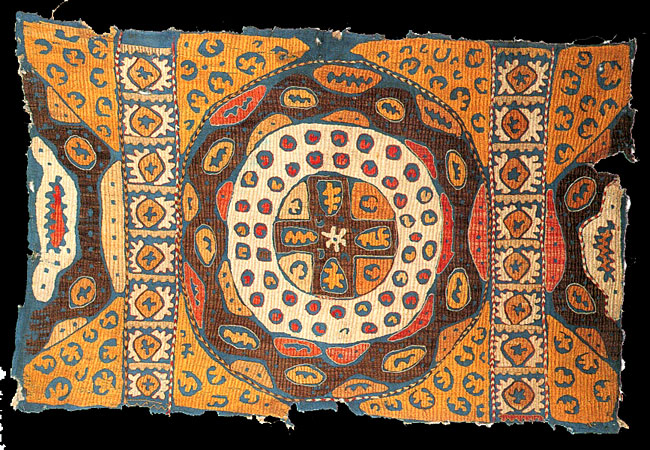
Kaitags are a rare form of embroidered textile from the Kaitag district of Daghestan (which is mainly inhabited by Dargins). Virtually unknown in the West until the late 1980s, there are apparently only around 600 known pieces in the entire world.
Kaitags were essentially used to distract the evil eye during ritual ceremonies such as births, weddings and funerals — probably by ritually "shielding" the protagonist(s) of such ceremonies i.e. the baby, the couple, or the deceased — and with this purpose in mind were very brightly decorated with many different symbols (stags, hands, sun symbols, &c. &c.).
[Note: These photographs of kaitags were borrowed from
the website of "Metropolitan Carpet, New York NY" (link).]
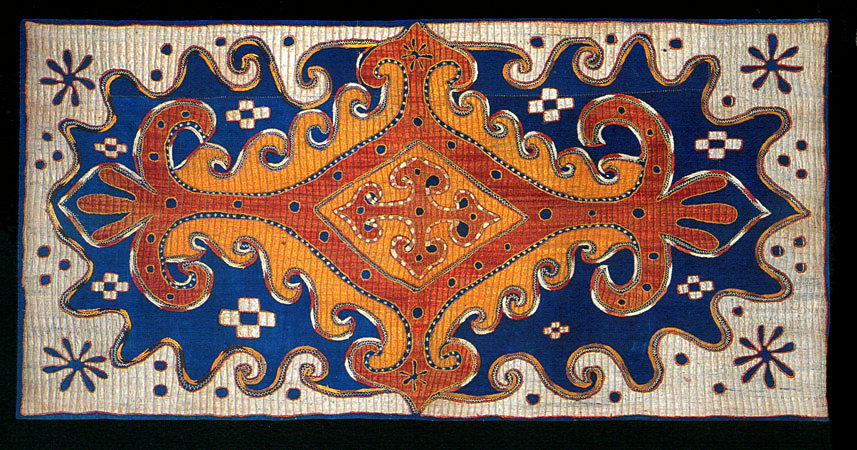
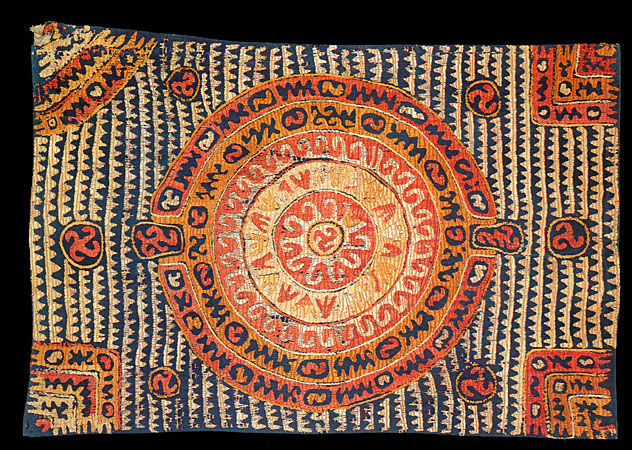
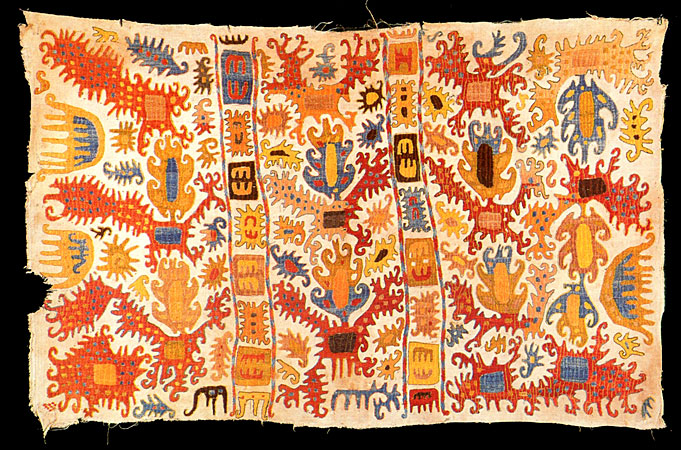
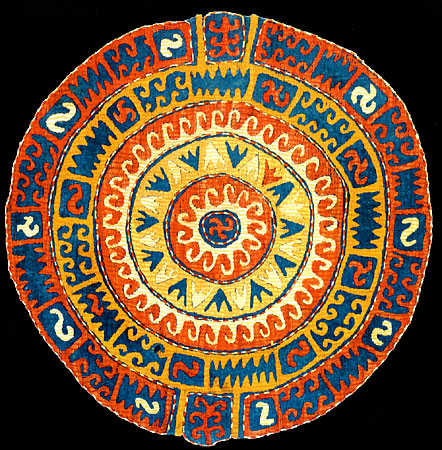
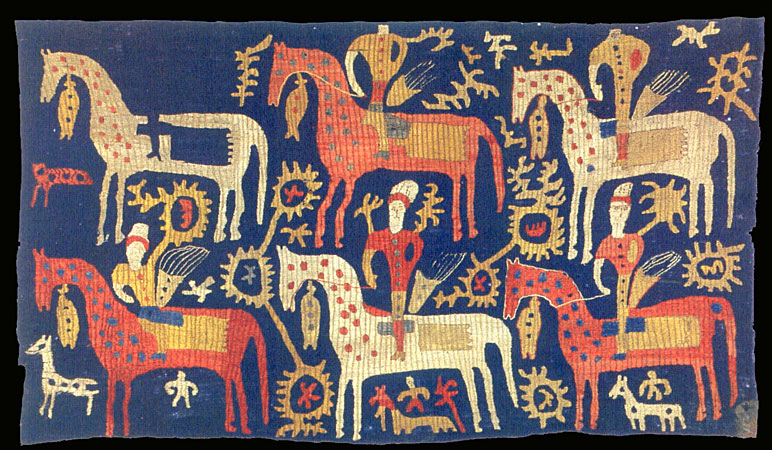
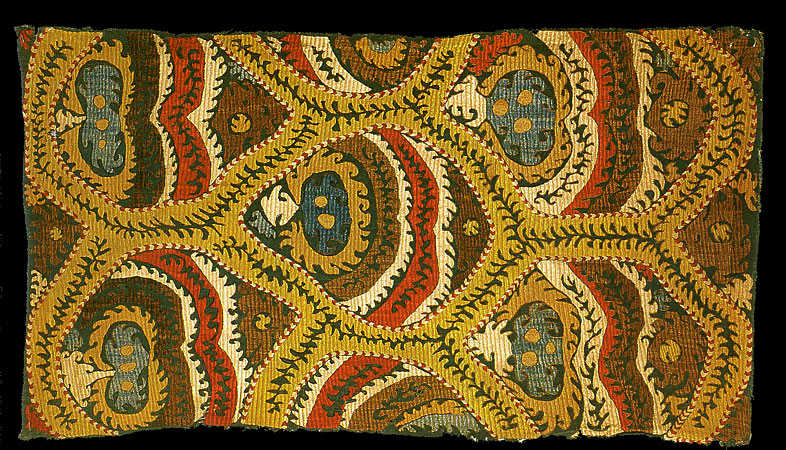
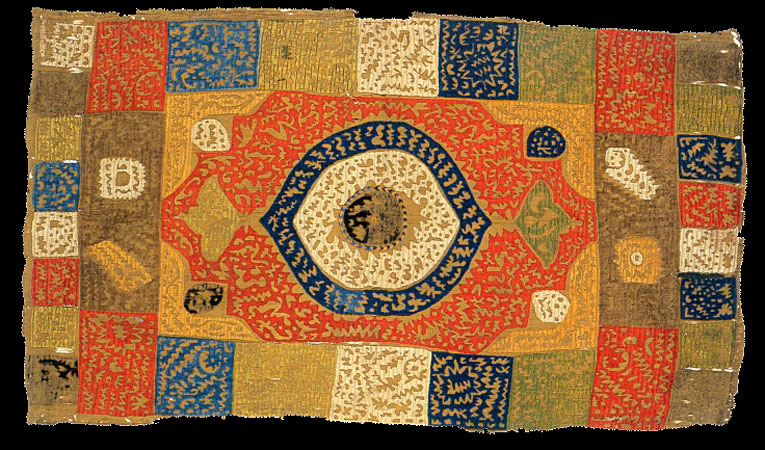
An exhibition of kaitags (Kaitag: Arte per la Vita | Kaitag: Art for Life) was recently (11 September 2010—31 January 2011) held in the Museum of Natural History of the small Italian town of Pordenone in the Veneto.
The website of the Comune di Pordenone (link) had this to say:
"The Municipality of Pordenone is organizing an exhibition entitled “Kaitag, Art for Life”, which will take place from September 11th 2010 to January 31st 2011 at the newly-renovated Museum of Natural History in Via della Motta 16, Pordenone.
"Dr. Carlo Scaramuzza, a scholar of Oriental textile arts, with the cooperation of the Association “Cintamani”, is coordinator of the exhibition, which will display 60 examples of Kaitag, embroidered silk fabrics made in Daghestan (North-Eastern Caucasus) and selected from numerous European collections. Many of these works have never been shown in public.
"These hand-crafted fabrics date from 1600 to 1800; they were made by the women of the villages and used by the families on especially important occasions – births, weddings and deaths. They were passed down from generation to generation as family heirlooms.
"This custom, which was observed almost religiously by the villagers, is the reason for the excellent state of conservation of these delicate objects, of which only a small number are still in existence. In fact, it is estimated that only a few hundred antique kaitags still exist.
"Robert Chenciner, a famous English traveller and researcher, has spread the acknowledge of the Kaitag to the West. Apart from a few rare earlier testimonies, awareness of the extraordinary cultural and artistic value of these hand-crafted works came only after the publishing of his volume “Kaitag: Textile Art from Daghestan” in 1993.
"Since then, a number of enlightened collectors have begun to acquire these embroidered fabrics that today are highly sought-after items in the Art market and rarely available to non-specialists.
"The exhibition in Pordenone gives the public the opportunity of seeing these fascinating, extraordinary and aesthetically modern works. Without doubt kaitags will contribute to broaden the visitors’ cultural horizons towards less famous cultures and make them aware of the existence and value of the so-called decorative Arts.
"The catalogue, edited by Carlo Scaramuzza, is written in both English and Italian, and offers a number of original essays by well-known scholars. The catalogue is embellished by numerous technical photographs by photographer Elio Ciol.
"During the period of the exhibition, two special meetings are planned – the first on “Modern Scientific Methods Applied to the Arts”, the second on “Textiles as Carriers of Culture between East and West” – with the participation of renowned university professors and scholars.
"In addition, guided tours for groups, which should be booked in advance, and educational activities for schools will be organized."
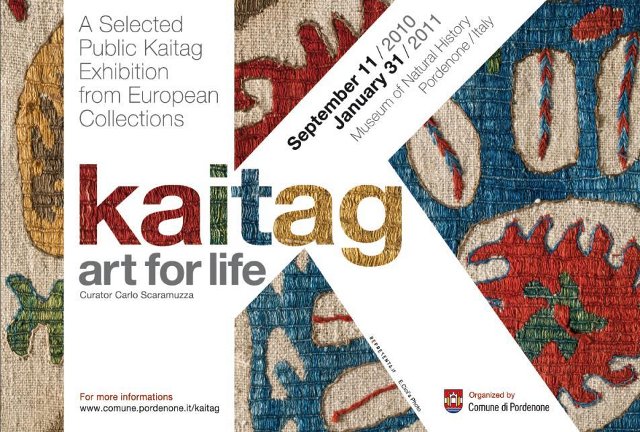
The very beautifully-illustrated bilingual English-Italian catalogue of this exhibition — entitled Kaitag - Art for Life, a Selected Public Kaitag Exhibition from European Collections (see image above) — is illustrated with photographs of around 60 kaitags selected by the exhibition's curator Carlo Scaramuzza as well as with documentary photographs taken by Robert Chenciner during his travels in Daghestan. The catalogue can be bought online on its publisher's website (link). (Note: As of December 2010, only a few copies remained.)
Robert Chenciner essentially brought kaitag art to the world's attention following his numerous trips to Daghestan in the late 1980s. His Kaitag — Textile Art from Daghestan (London: Textile Art Publications, 1993) is still considered as the reference, and seems to sell for quite a healthy price.
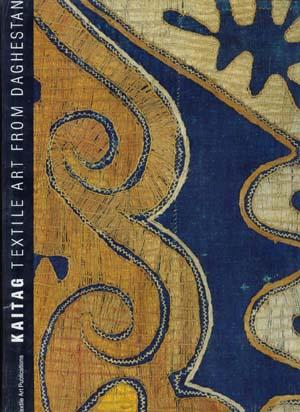
In January 2011, the "cheapest" copy of this book available on Abebooks.com retailed at £164.81 ($262.15, €191.11; including £11.19 for postage to the United Kingdom from Switzerland). Readers merely interested in the illustrations would be better off buying the French translation (which sells for about a third of the above-mentioned price; see below) but might be depriving themselves of the no doubt interesting English text.
(Note pour les francophones: Ce livre a été traduit en français: Kaitag: L'art textile du Daghestan, Paris: Textile Art Publications & l'Institut du Monde Arabe, 1994.)
Unless stated otherwise or obviously not the case, all the text and images on this website are © A.J.T. Bainbridge 2006-2011
Do get in touch! Gmail: alexjtb
